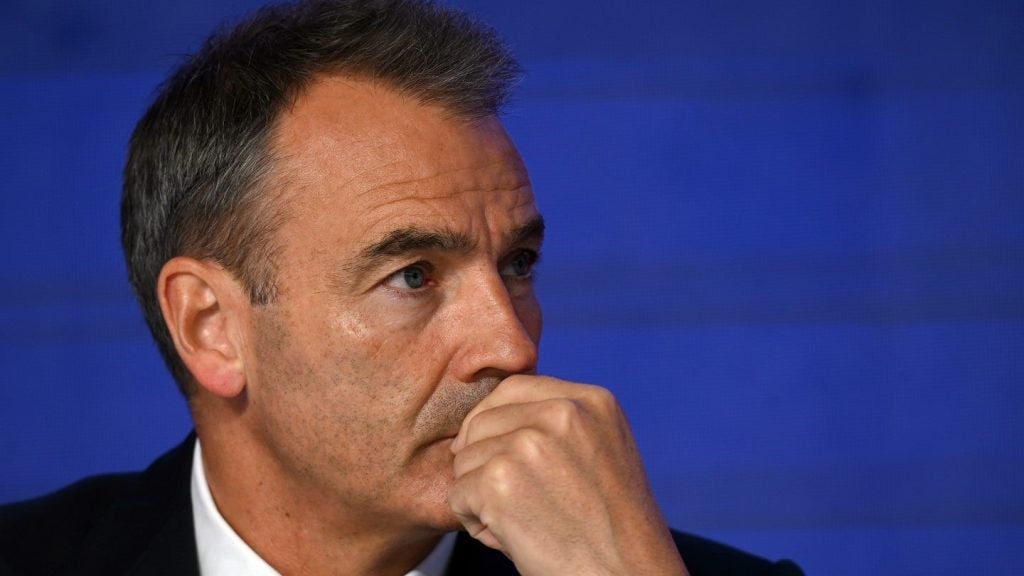
Germany has recovered more quickly than other European nations from the 2008-2009 financial crises, and remains the largest economy in Europe. As a result of the difficult economic conditions, German consumers appreciate the features offered by life insurers, such as cover against biometric risks (death, disability or disease) and old-age guarantees and have invested more in guaranteed-return life insurance products to secure their futures.
In terms of gross written premium, the German industry valued EUR177.2 billion (US$246.2 billion) in 2009 and increased to EUR195.0 billion (US$258.5 billion) in 2013, making it the sixth largest globally. The impact of the global financial crisis meant that the industry registered annual growth of just 0.2% in 2011. Following a period of recovery, this figure rebounded to reach 3.1% in 2013.
In terms of density and penetration, the life segment is one of the strongest in Europe. It dominates the industry with a 46.9% share in 2013, followed by non-life with 30.9% and personal accident and health with 22.2%. Due to the impact of the European sovereign debt crisis, the life segment shrank by -3.9% in 2011. However, it recovered in 2013, registering a growth rate of 4.0%.
This was driven by various factors such as an influx of highly skilled individuals, a thoughtful and balanced budget with low borrowing costs and high infrastructural prospects with respect to a growing housing market, strong economic growth, rising disposable incomes, and improved consumer awareness of the benefits of life insurance products.
The life segment was led by endowment products, followed by general annuity insurance. Reduce demand for endowment products is expected to cause their segment share, in terms of gross written premium, to fall from 47.6% in 2013 to 45.5% in 2018, whereas the share of general annuity products is expected to increase from 29.3% in 2013 to 31.7% in 2018.
Although the low interest rates and volatile capital market significantly affected the life segment, demand remained steady, mainly driven by the expiry of life policies concluded in previous years. In addition, German consumers preferred to invest in guaranteed-return life products to secure their futures.
How well do you really know your competitors?
Access the most comprehensive Company Profiles on the market, powered by GlobalData. Save hours of research. Gain competitive edge.

Thank you!
Your download email will arrive shortly
Not ready to buy yet? Download a free sample
We are confident about the unique quality of our Company Profiles. However, we want you to make the most beneficial decision for your business, so we offer a free sample that you can download by submitting the below form
By GlobalDataLife insurance penetration stood at 3.4% in 2013, much lower than other European countries such as the UK and Finland. Gross written premium value of the life segment amounted to EUR91.5 billion (US$121.3 billion) in 2013, and is third in Europe after the UK and France. The segment has the greatest growth potential in Western Europe after Spain, due to strong economic performance and a growing population.
The industry has a high level of government influence. The Federal Financial Supervisory Authority (BaFin) supervises and regulates the banking, financial services institutions, as well as insurance undertakings. Due to the liberalization policy since 1994, the entry of foreign insurers into the segment led to the launch of several equity-exposed products as they have been successful in penetrating the life insurance segment, and helped to attract new customers.
The segment is fragmented; the 10 leading insurers accounting for 54.5% of the gross written premium in 2012. With the presence of 96 insurers, the has scope for new entrants.
Demographic factors, lower investment returns and rate have led to increased concerns about retirement among the population, driving demand for high-return private pension and retirement plans.
Demographics and pensions
Of the 82 million people residing in the country, 30% are aged 55 years and above. This figure is expected to reach 40% by 2050. At the same time, life expectancy increased as the population aged above 80 years grew from 4.10 million, or 5.0% of the overall population in 2009 to 4.43 million, or 5.5% of the population, in 2013. This is expected to reach 5.12 million by 2017 (6.3% of the population). The aging population will support the growth of individual endowment, general annuity and pension life insurance.
The retirement and pension system is based on the government-run retirement insurance system, private company plans and private individual retirement investments. The strong state pension system negatively affects the penetration of private life insurance.
However, as the country prepares to gradually increase the national retirement age to 67 years by 2029, and has reduced benefits for future pensioners, the popularity of private pensions has improved marginally at the expense of public pensions. A new tax system that provides tax advantages to employees investing in retirement benefits is also expected to support the purchase of private pension products.
Moreover, the aging population will support the growth of individual endowment, general annuity and pension life insurance. Increased life expectancy, an aging population, lower investment returns and a low birth rate have led to increased concerns about retirement among the population, driving demand for high-return private pension and retirement plans.
Economics and incomes
Germany is the largest economy in Europe, and the second largest in terms of population (after Russia). The economy, in terms of GDP at constant prices, grew from EUR2.3 trillion (US$3.2 trillion) in 2009 to EUR2.5 trillion (US$3.3 trillion) in 2013, at a CAGR of 2.1%. It is expected to reach EUR2.6 trillion (US$3.7 trillion) in 2018.
The per capita annual disposable income (PCADI) increased from EUR28,545.2 (US$ 41,813.7) in 2008 to EUR33,917.7 (US$43,604.6) in 2012. The rising PCADI leads to high spending capacity. In addition, the country’s unemployment rate fell from 7.7% in 2009 to 5.5% in 2013, and is expected to fall to 5.4% in 2017. This will increase the working population and disposable incomes, enabling people to invest in life insurance.
The country has large growing manufacturing, service and agricultural industries. The economy is also performing exceptionally well in terms of manufacturing. According to the Manufacturers’ Alliance for Productivity and Innovation, manufacturing accounts for 21% of the economy. This results in generation of employment in sectors such as machinery, electronic equipment and road vehicles.
On the downside, Germany’s large trade deficit means that it is hugely dependent on exports to Europe and neighbouring countries whose economy is not performing as strongly and might, indeed, be struggling in the aftermath of the financial crises.
In terms of growth potential for life insurance, it is the fastest growing market in Western Europe after Spain.
Rocky path ahead
While demand for life products has been steady, low interest rates and volatile bond and equities markets have pushed down insures’ long-term investment returns and pose a major challenge to life insurers. In 2012, the loss incurred due to the low interest rates grew to EUR4 billion (US$5.1 billion).
The Federal Government and BaFin have made it compulsory for all life insurers to establish a Zinszusatzreserve, an additional provision to the premium reserves, to improve life insurers’ risk-bearing capacity. The Zinszusatzreserve was introduced in 2011 in response to low interest rates, to compensate for lower investment incomes and to increase consumer confidence in life insurers. The Zinszusatzreserve rose from EUR5.0 billion (US$6.4 billion) in 2012 to EUR7.0 billion (US$9.3 billion) in 2013 and is expected to reach between EUR8 billion (US10.8 billion) to EUR10 billion (US$13.5 billion) in 2014 as per the estimates.
In the face of a long period of low interest rates, the German finance ministry worked on a long-term plan for the stabilization of life insurance. The Life Insurance Reform Act was signed into law in August. It includes cuts to the participation in valuation reserves for policyholders whose policies expires or who are leaving; reduces the minimum guaranteed interest rate; increases the surplus participation; blocks the distribution of dividends to shareholders; introduces a yield indicator; and reduces the maximum zillmerisation rate. However, it has come under attack from consumer watch dogs.
In addition, federal financial supervisory agency BaFin has been granted greater powers to monitor the offerings of life insurers.
Product innovation
To address changing consumer requirements, life insurers have begun to create products that combine traditional life insurance and unit-linked products by periodically shifting funds between the policy reserves stocks of an insurer by keeping an interest rate guarantee. This is done with the aim to combine the stability of traditional life insurance policies combined with the positive capital market returns.
Distribution channels
The distribution network for life insurance is predominantly made up of brokers, bancassurance, and agencies. Together, these channels accounted for 93.8% of the life segment in terms of new business written premium in 2013. The remaining 6.2% was distributed among direct marketing, e-commerce and other distribution channels. Brokers’ large networks and consumer confidence made it the largest life insurance distribution channel in Germany.
The brokers channel accounted for the largest share of life insurance gross written premium from new business in Germany in 2013, followed by bancassurance. The personal customer base and local base of insurance brokers increase consumers’ confidence levels. Due to the dominance of brokers and the strong growth of bancassurance during the last few years, these two channels have been competing intensely to generate new business.
The German government has started an initiative to popularize insurance by providing tax benefits. Insurers have also made innovations in life and pension products to address consumer needs, increasing the number of life policies on sale. As a result, the life segment’s written premium recorded a CAGR of 1.6% during the review period, from EUR85.9 billion (US$119.4 billion) in 2009 to EUR91.5 billion (US$121.3 billion) in 2013. The life insurance gross written premium from new business generated through the brokers channel increased from EUR14.4 billion (US$20.1 billion) in 2009 to EUR13.5 billion (US$17.9 billion) in 2013, which is expected to reach EUR16.3 billion (US$23.0 billion) in 2018.
Bancassurance is the second largest channel for distributing life insurance. Its market share, in terms of new business gross written premium, grew from 20.9% in 2009 to 24.4% in 2013, and is expected to reach 24.1% in 2018. The gross written premium from new business generated through bancassurance increased from EUR5.6 billion (US$7.8 billion) in 2009 to EUR6.7 billion (US$8.9 billion) in 2013, at a CAGR of 4.4%. This is further expected reach EUR8.3 billion (US$11.6 billion) in 2018, registering a CAGR of 4.2%.
Global rating agency Fitch Group expects bancassurance to increase its market share if it emphasizes employee training, common branding, and products with more profitability. Leading bancassurance partnerships in Germany include Allianz and Dresdner bank, R+V and Volksbanken, Zurich and Deutsche Bank, HVB and Ergo. With improving awareness of life insurance among consumers following government promotional initiatives, and the promotion of bancassurance by insurers, the overall life segment is expected to grow. The rising number of internet banking customers and the focus of banks to increase fee-based income by promoting the sale of financial products such as life insurance will also drive the growth of bancassurance.
Insurance agents remained the third largest distribution network. Tied agents remain a major distribution channel for small and medium-sized insurers which do not operate their own channels. Multi-tied agents and brokers also play a pivotal role in distribution of unit-linked policies. Few large companies are major players in the broker market but the tied-agent channel is the most preferred channel for medium sizes and small scale insurance companies as building up a whole team of national tied channel is not feasible.
Brokers and financial advisor networks tend to be the dominating channel for new entrants. The market share of agents, in terms of new business gross written premium, stood at 20.3% in 2009, and is expected to reach 21.9% in 2018. The new business gross written premium generated through agencies stood at EUR5.6 billion (US$7.4 billion) in 2013, and is expected to reach EUR7.5 billion (US$10.6 billion) in 2018.







